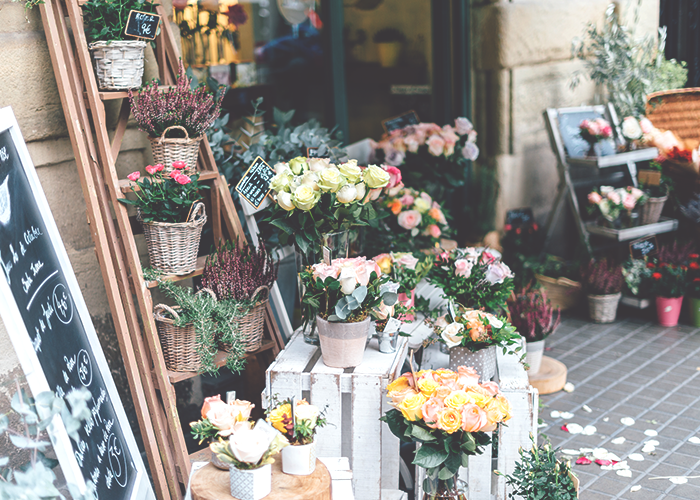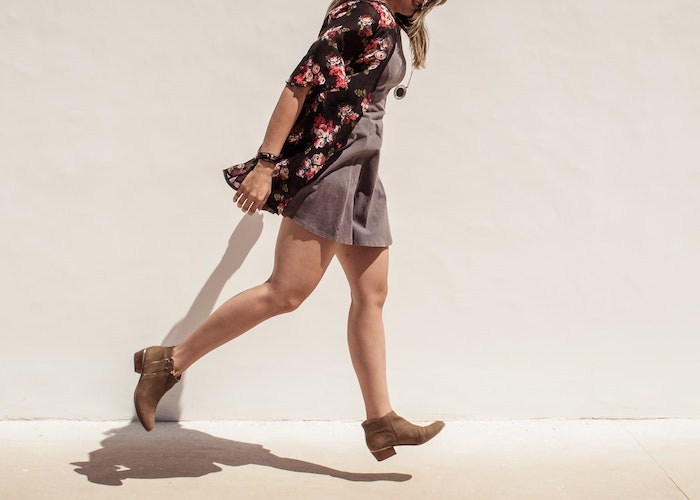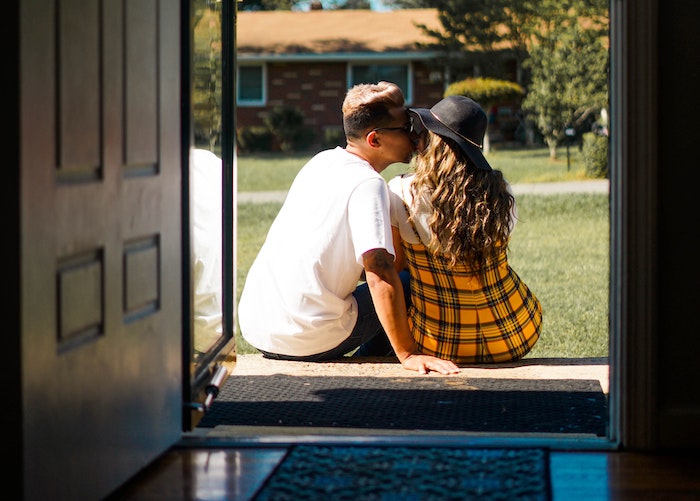5 Utterly Insane Things I Learned While Designing My Engagement Ring

As most of you probably know already, I’ve been engaged for a little over four months now, and in that time, I’ve designed a beautiful ring with Marc to celebrate that engagement. (And no, for those who have asked, I won’t be sharing a photo of that ring on social media — it’s just something I find personal, and I’m not interested in something Marc and I created together being put up for any kind of public scrutiny, even if most of it would be very positive.) Point being, I am a ring-wearing person now, and despite the fact that it is not something I’m always 100% comfortable with — as someone who has never owned or coveted designer objects, having such a visible display of money on my hand can be uncomfortable at times — I do love the ring overall.
And moreover, I loved the process of designing it with Marc and an incredibly-talented jeweler and artist whose work I’d been following for a long time. I loved the process of being proposed to with a simple, temporary ring (a ring I also cherish and often wear on my other hand), and then being able to create something together with Marc which represents not just my taste, but a collaborative decision in financial and aesthetic terms. Not only was the process of designing the ring fun as hell — and getting to watch a woman I’d admired for so long work was in and of itself a joy — I also loved that it was such an active moment on both of our parts.
I have never liked the idea that Marc, perhaps with the best-intended help of a few loved ones, would select something for me that I would have to wear prominently for the rest of my life. I would like to have a say in how that thing looks, how much it costs (including helping to pay for it), and how it is made. If you have thought this, too, and particularly if your finances are already combined, I cannot recommend enough creating or choosing a ring together. In my view, it in no way detracts from the experience of the engagement (as some people fear). In fact, I’d argue that it extends the joy by adding yet another wonderful, shared moment.
All of that said, I understand that an engagement (and the ring-choosing that often accompanies it) is a deeply personal and unique thing. Some people don’t want a ring at all, others want to be totally surprised by the presentation, still others have long had a plan for a family heirloom or a personally-designed piece. Whatever your preference is, I can only universally encourage that the woman make her choices as much a part of the conversation as possible. No woman should feel like it’s pushy or un-traditional for her to make known what she wants. She is an active, equal participant in the relationship who, lest we forget, actually has to wear this item every day. And that might seem like an obvious thing to insist on, but as someone who took advantage of our ring-designing session to also ask the designer and her assistant plenty of questions about the engagement ring-buying world, I was beyond shocked at how many outdated (and frankly damaging) gender norms are still deeply in play.
So, in the interest of turning the experience into a bit of a financial lesson, here are the five craziest things I learned about the engagement ring process from designing my own.
1. The default is women being prevented from seeing the price.
By far, the most shocking thing I heard during the process was how rare it is for a woman to be actively participating in the financial side of the ring creation. (And this is while women are in the studio choosing stones/settings!) Initially, the numbers were hidden from me, and only when I started speaking openly about the budget we had come to did they realize I was a part of the decision (as well as the financing). Marc and I were having an open discussion about whether to go over our planned budget, and that I would make up any difference in addition to my contribution, and they actually volunteered the comment: they almost never, ever see women do this, because the men explicitly instruct them not to show any numbers. And this very much includes couples who live together, whose finances are combined, and who are therefore equally impacted by the ring’s cost. I was beyond shocked at this, and immediately wondered how many of the women in these stories would have largely preferred to be a part of the conversation. Our initial budget — $7,500 — and the price we settled at — just under $10,000 — was a direct result of a) a long conversation, and b) the fact that I was paying for part of it. And if your engagement ring is of insignificant cost, sure, that can be an individual decision. But if your engagement ring is in any way an investment, as many are, the idea of one half of the couple whose finances this represents being excluded from the conversation is ludicrous.
2. The process is often deeply transactional.
On the one hand, I completely understand the need to be at least somewhat unemotional about the ring-purchasing prospect, as it is extremely easy to get carried away. (For context, the central stone on my ring is not even a full carat — .9 something — and the price was already at the very, very top of what we were considering.) For me, a ring has always been something very important to me, as I have been lucky enough to inherit many of my grandmother’s clothes and jewelry, and always known that I would like at least one or two things of similar enduring value to wear every day, and to pass down to a child or someone I love. And while I understand that for many people, a ring is simply not something to spend money on — I feel largely the same way about most costs associated with a wedding, and have an explicit goal to make my wedding as small and affordable as possible — for those who have decided that a ring is an important purchase, I was shocked to hear about just how explicit the financial side can be. We heard a lot about men (and couples!) who went into the process barely speaking, there only to find the biggest, most expensive piece to offer their fiancée, even getting frustrated that what they wanted wasn’t available (the artist we went with only works with vintage stones, so her selection is naturally somewhat limited). This idea that “bigger is better,” and somehow representational of how much you love your soon-to-be spouse, is apparently deeper than I imagined, even when going to a jeweler who is more sought after for her designs than for a name-brand like Cartier or her sizable stones.
3. The diamond makes up the vast, vast majority of the cost.
I went into the process fairly certain I didn’t want a diamond, and ended up with a diamond mostly surrounded by other stones. I love the ring we ended up creating, and I do like the versatility of having a completely-neutral central stone (I imagine I will occasionally change some of the surrounding stones as my tastes change over the years). But I am also frankly flabbergasted at how much the diamond determines the cost of the ring itself. I was asking about the cost differences in various surrounding stones — not-tiny sapphires and spinels — and our designer was quite frank in telling us “It really doesn’t matter, it’s only a few dollars’ difference. The only thing that changes the cost is the central stone.” Now, obviously, we paid a high premium on our ring because it was custom-designed by an artist who values her time highly, and we knew that going in. But the diamond itself still represented several thousand dollars of the cost, which is something I simply wouldn’t have expected going in.
4. Budgets are routinely blown up.
One of the most cringeworthy side effects of the whole “woman-is-not-let-in-on-the-cost” phenomenon is that, if she participates at all in the choosing of the ring without knowing the numbers, she almost always unknowingly blows up the man’s budget. It is simply too easy to look at two rings that seem similar on the surface, yet can vary by thousands of dollars, and not understand the differences factoring into the disparate prices. It took us a very long time to decide between stones because we had to be very discerning about what was actually worth it in our view, and even then we ended up knowingly over-budget. If I had just gone in blind and picked out what looked the most like the image I had in my head, I would have very, very easily doubled what we intended to spend without being any wiser. This dynamic — the combination of men not always knowing what is an appropriate amount, and women not being allowed to participate in the conversation, financially — is undoubtedly what leads to men routinely overspending, and often putting themselves in debt, to pay for a ring.
5. Women are often secretly unhappy with their ring.
Probably the saddest, and I imagine most unfortunately-common, issues we were told about was a simple one: women who secretly come back to the jeweler partially or totally unhappy with their ring because they weren’t part of the actual decision-making process. Perhaps it was because the man just chose based on what culture had told him women wanted, perhaps her friends/family who helped him choose didn’t know her tastes, or perhaps she simply thought she wanted something that she didn’t love in practice once she had it on her hand. In any case, the phenomenon of women feeling at least a little unhappy with what they have is much more common than we think. And speaking personally, I went in with an idea of what I wanted that our designer (thankfully) refused to create for me, because the color of the stones were essentially the color of my skin, and looked absolutely terrible once put together. If I had simply sent Marc on a mission with what I thought I wanted, I would have ended up with a ring that I deeply disliked in practice. And even while spending a few hours painstakingly choosing what I liked best, our designer was very open about, “Hey, sometimes you wear it for a few weeks and decide you want this or that tweaked, and you can come back to swap something out.” The point is, this is something that I am wearing every single day, and should be something I absolutely, unequivocally love and choose — something that flatters me and makes sense for my style and reflects my personal tastes. It should be something I actively decide on, not something that was decided on for me. And while no one can ever be perfectly sure what they love in the long-term (after wearing my ring for about two months, I’m still unsure if I want to make one little stone darker after hesitating back-and-forth), not at all participating in something you will wear every day significantly ups your chances of being dissatisfied.
The point is, no matter what you decide is the right price or the right design for a ring, have it be as much your choice as your partner’s. If you really want it all to be left to surprise, sure, but never, ever feel that that is somehow an obligation of the process. It’s 2017, women are equals in hetero relationships, and we are allowed to be a part of any process we want. And trust me when I say, being a part of this process is actually sweet (and illuminating) as hell.
Image via Pexels




